Photographed by Kalie Ilana Cassel-Feiss
It’s a bright summer day. Children are chasing chickens and sheep are being shorn. Lambs and baby goats wobble and prance about. The sounds of laughter and delighted squeals mix with the throaty crowing of a rooster. Around 300 visitors have come to UC Elkus Ranch in Half Moon Bay for its annual Sheep to Shawl event when the farm gates are opened wide to anyone interested in getting a glimpse of the agrarian life.
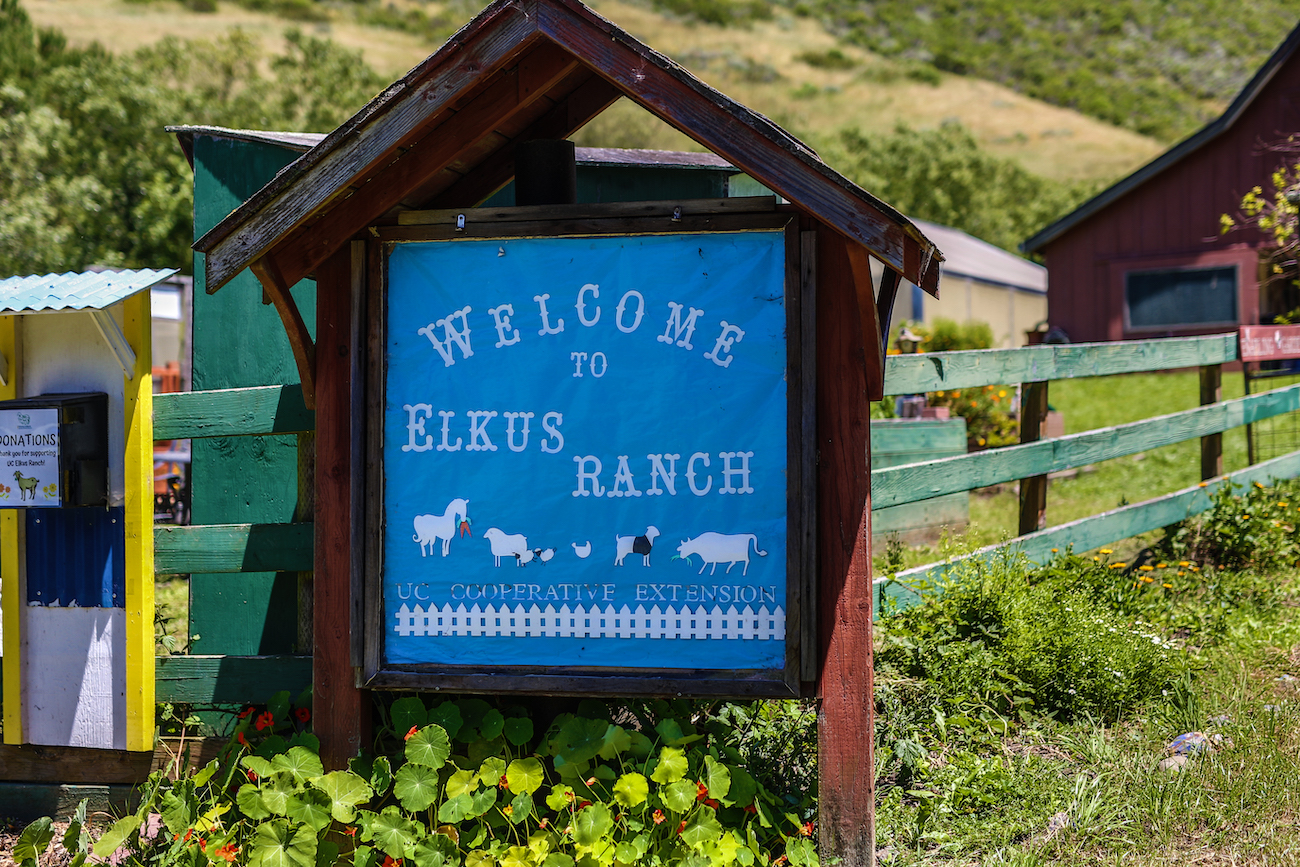
“We’ve been holding this event for more than 20 years now,” smiles Leslie Jensen proudly, checking in a line of visitors queueing down the gravel path. “It’s an opportunity for the whole community to come and see what is happening at Elkus Ranch. Normally we aren’t open to the public – we mainly serve school groups throughout the year – but this encourages everyone to come to interact with the animals and participate in farm activities. And most importantly, to have fun!”
As the Ranch’s program coordinator — and one of its veteran staff members — she’s seen the excitement that Sheep to Shawl generates year to year. While the activities remain fairly consistent — like grinding corn to make scratch for chickens or watching weavers spin coarse wool into smooth skeins of yarn — the curiosity and energy of the families and visitors who come to participate in the day make it memorable and unique.
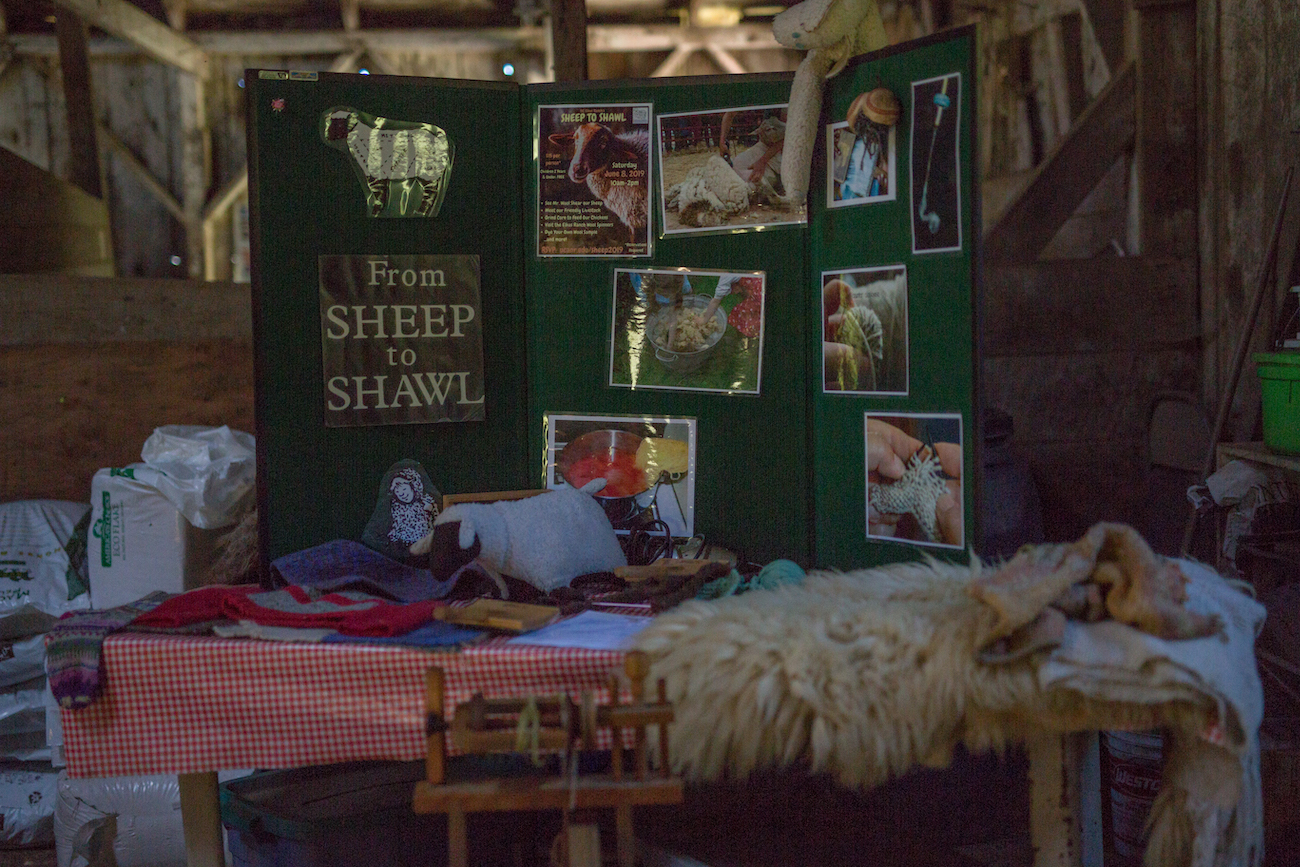
“This is definitely one of the most anticipated events in our calendar,” agrees Margaret (Maggie) Gunn, Director of Elkus Ranch.
Gifting 630 acres to the University of California in 1975, donors Richard and Ruth Elkus envisioned a place where youth — especially youth from different areas, socioeconomic backgrounds, and of different abilities — could learn and interact together. Where they could plant flowers, feed goats and collect eggs. Where the guiding principles of 4-H programs (head, heart, hands, and health) would drive every interaction and activity. Fortunately, this is exactly what Elkus Ranch has become, and more. It has helped keep California’s agricultural heritage alive by inspiring future generations to become stewards of the land and its animals.
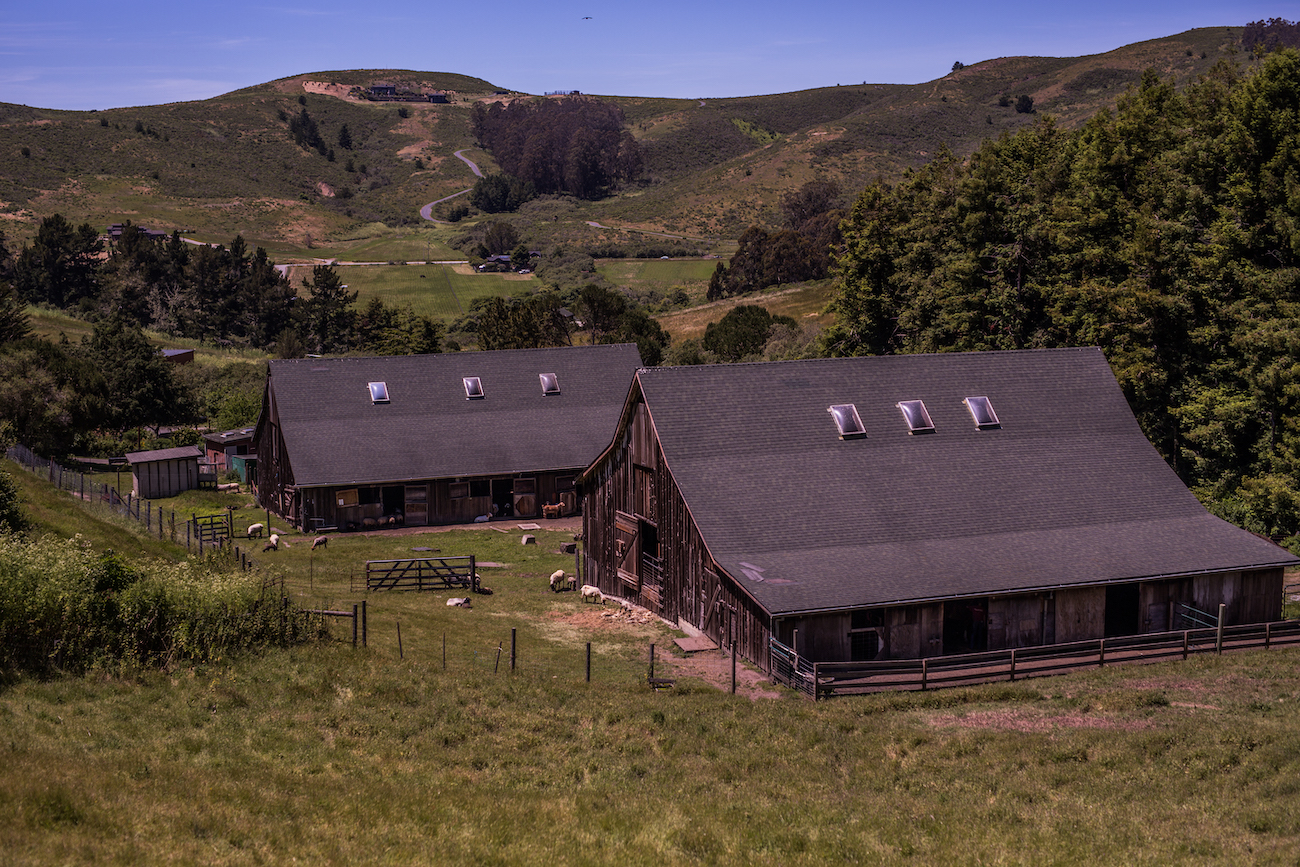
“Everything we do is approached from a holistic perspective,” explains Gunn. “Children are eager for active work and real purpose. We get them out of the classroom and into the barn for play-based learning. They groom the animals, feed them, muck out the stalls and plant seeds. The actual doing builds their knowledge, skills, and appreciation of the environment. They see how everything is connected, particularly the relationships between human to animal, animal to plant, and nature to human.”
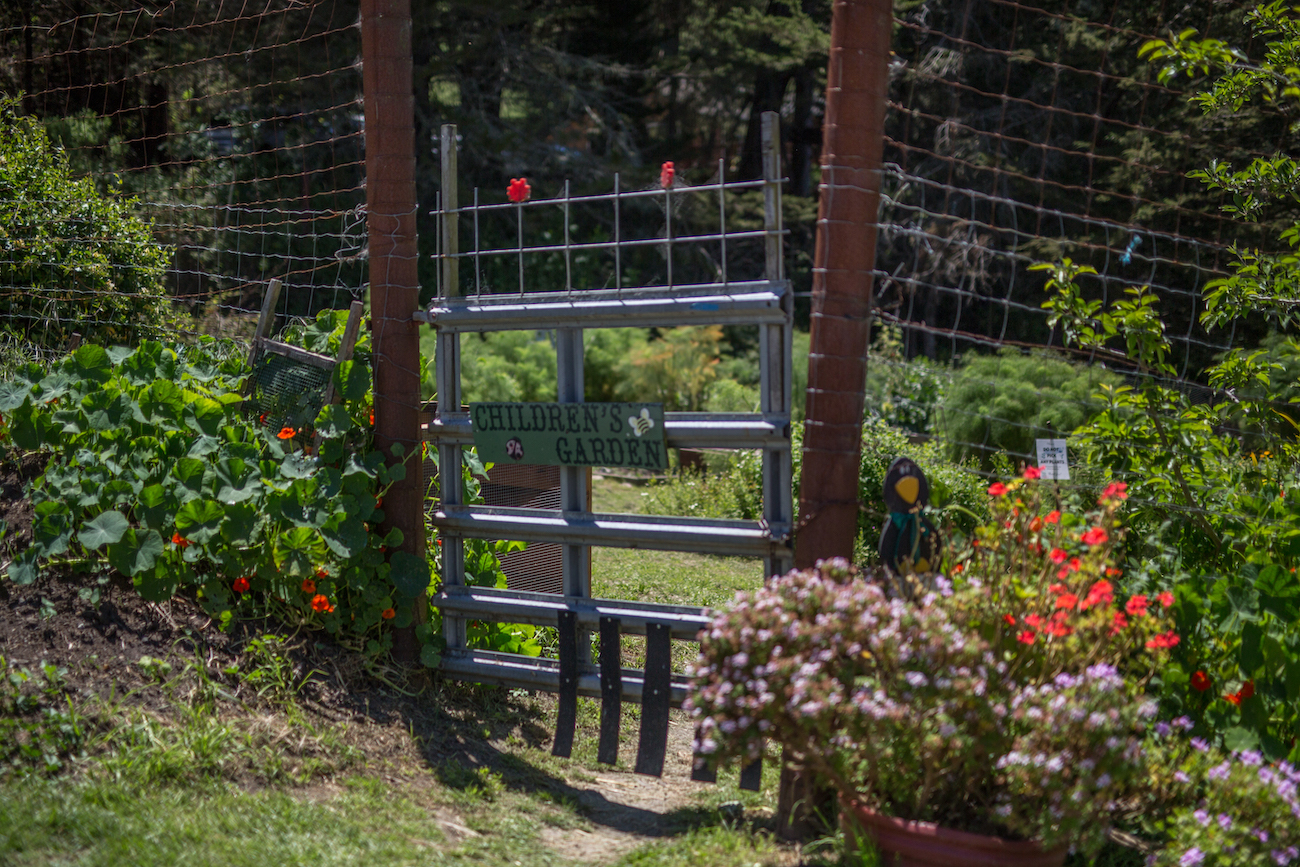
It’s civic engagement nurtured in the fields and reinforced in the barnyard. Because while children are the main focus at Elkus Ranch, the property also encourages organizations other UC programs, like the UC Master Gardener and UC Master Preserver programs to meet and hold events on-site. There are workshops hosted throughout the year, such as last May’s Poultry Health and Production workshop, aimed at supporting members of the community actively raising poultry and who might be interested in producing commercially. And on Thursdays, long-time volunteers from Hope Services, a local organization supporting adults with developmental disabilities, come to maintain their own garden beds, help in the greenhouse, and enjoy the ranch’s Enabling Garden.
“As part of the UC Division of Agriculture and Natural Resources, it’s our duty to bring research-based information to the public. From agriculture to healthy living, we aim to inspire and educate through enrichment experiences” says Gunn. This includes Lunch on the Ranch, a program that teaches children about nutrition by guiding them to harvest, prepare, and eat a three-course from scratch, including making table bouquets and sorting their compostable food waste for ranch animals. It also informs how the ranch cares for the 50 animals on-site: sheep, goats, horses, mini donkeys, rabbits, chickens and a cheeky llama named Spice. From conscious breeding to rotational grazing, all aspects of raising animals and maintaining the land are considered.
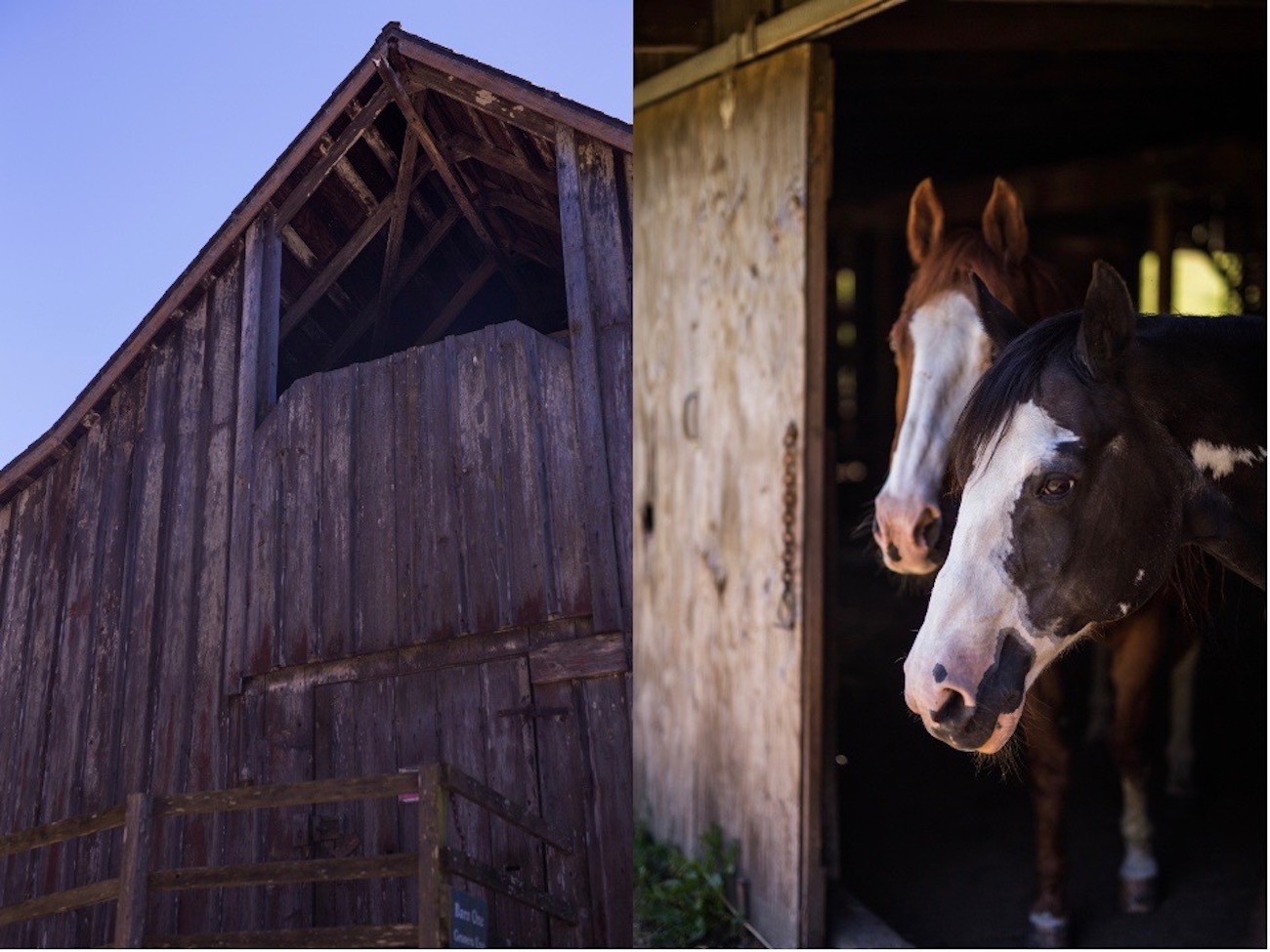
But there is also room for experimentation. This weekend, for example, visitors must step onto black mats before entering the property to prevent bringing potentially harmful organisms. The ranch is trialing an embedded system for biosecurity (i.e. people to animal contact) to expose visitors to new methods of on-farm health practices and limit the spread of disease across the farm and home environments. It’s an ongoing process, but one they hope will have promising results.
Gunn wipes her shoes on the mat, adjusts her sunhat and beckons.
“Let’s go! It’s my first Sheep to Shawl event, too.”
Joining the ranch almost one year ago, she has had the opportunity to see the enjoyment and value that Elkus Ranch’s outdoor education programs bring children and the greater public. “I’ve always had one foot in academia and one foot in public education,” she says with a grin. “This is a dynamic merging of the two.”
The first stop is the chicken yard. Hens zig-zag through the coop, pursued by eager children. Some peck at handfuls of scratch that have been thrown their way. Inside there’s a display on the various breeds found on the ranch, and a list of chicken chores that must be completed each day.
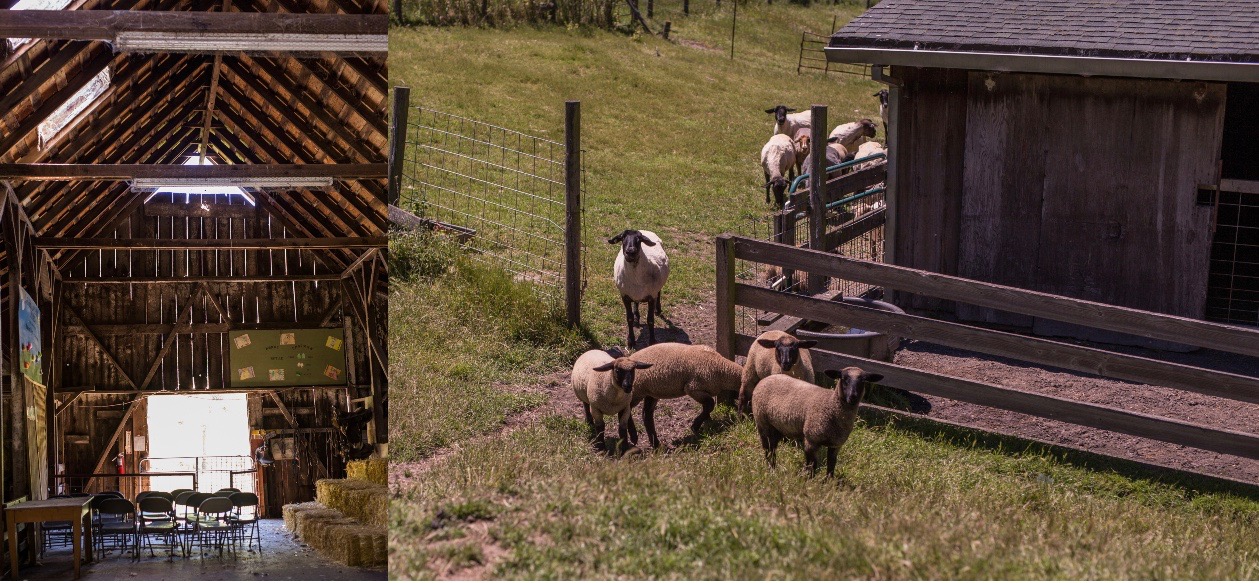
Next is the old milking shed, one of the three original buildings still onsite that is currently being used as a storehouse. A row of multicolored rakes hangs on a sidewall, ready for little helpers to grab one and go. Behind the shed, there’s a pasture with scampering goats, followed closely by children with feed and grooming brushes in hand.
“Oh look, Spice is hiding!” yells one girl in delight, revealing the llama’s secret spot and giving the goats a momentary reprieve.
Up the road is the first of two historic, hundred-year-old barns. Inside, visitors are kibbling corn for the animals on a vintage machine. Everyone who takes a turn at the crank is rewarded with a satisfying whoosh as the ground cornmeal pours into waiting paper bags.
Once out of the weathered barn, there are mother goats and their kids to visit across the way, along with a herd of rabbits. And just a few paces up, past tangles of abundant nasturtiums, lies the main attraction: the shearing shed.
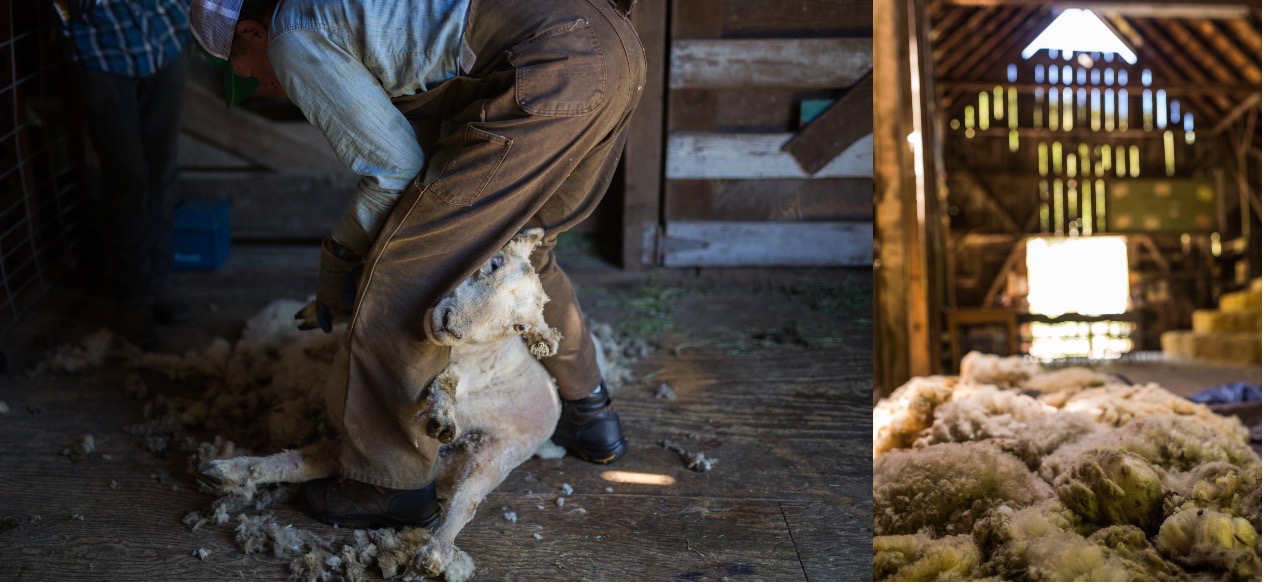
In the second historic barn, families are sitting patiently on chairs and hay bales waiting for Mr. Wool (yes, his real name — he did not stray from destiny) to begin his work. Mothers are chatting and infants are crawling. But as soon as Mr. Wool steps onto the platform, a silence descends. In a few quick movements, he wrangles a sheep, brings her to the ground, and the shearing is underway. Everyone leans forward for a better look as he expertly maneuvers her body, tossing bundles of wool to the side. Within a few minutes, the newly-shorn sheep is freed and a collective sigh is released along with a round of applause.
Overseeing the sheep shearing are groundskeeper Bruno Acosta and ranch foreman Augie Aguilar. Similar to Jensen, Aguilar has dedicated most of his career to Elkus Ranch, working there for more than two decades. While Mr. Wool gets ready for the next sheep, they answer questions and chat with the visitors.
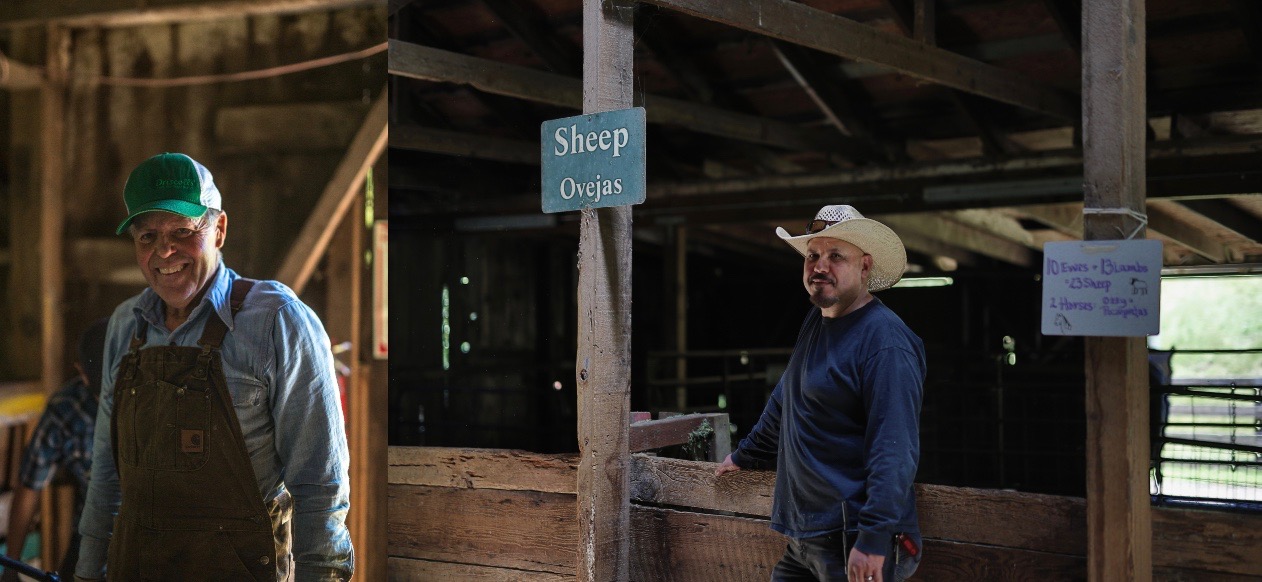
“This is a special place,” says Gunn.
A new group of visitors enters the barn. They peer over the stall dividers to look at the baby lambs and meander to a large educational display that is the focal point of the entire day – depicting how a shawl goes from being the wool on a sheep’s back to an item of clothing worn around someone’s shoulders. Next to it is the “Fleece of Many Colors” board, which shows various natural ways of dyeing wool to achieve different effects.
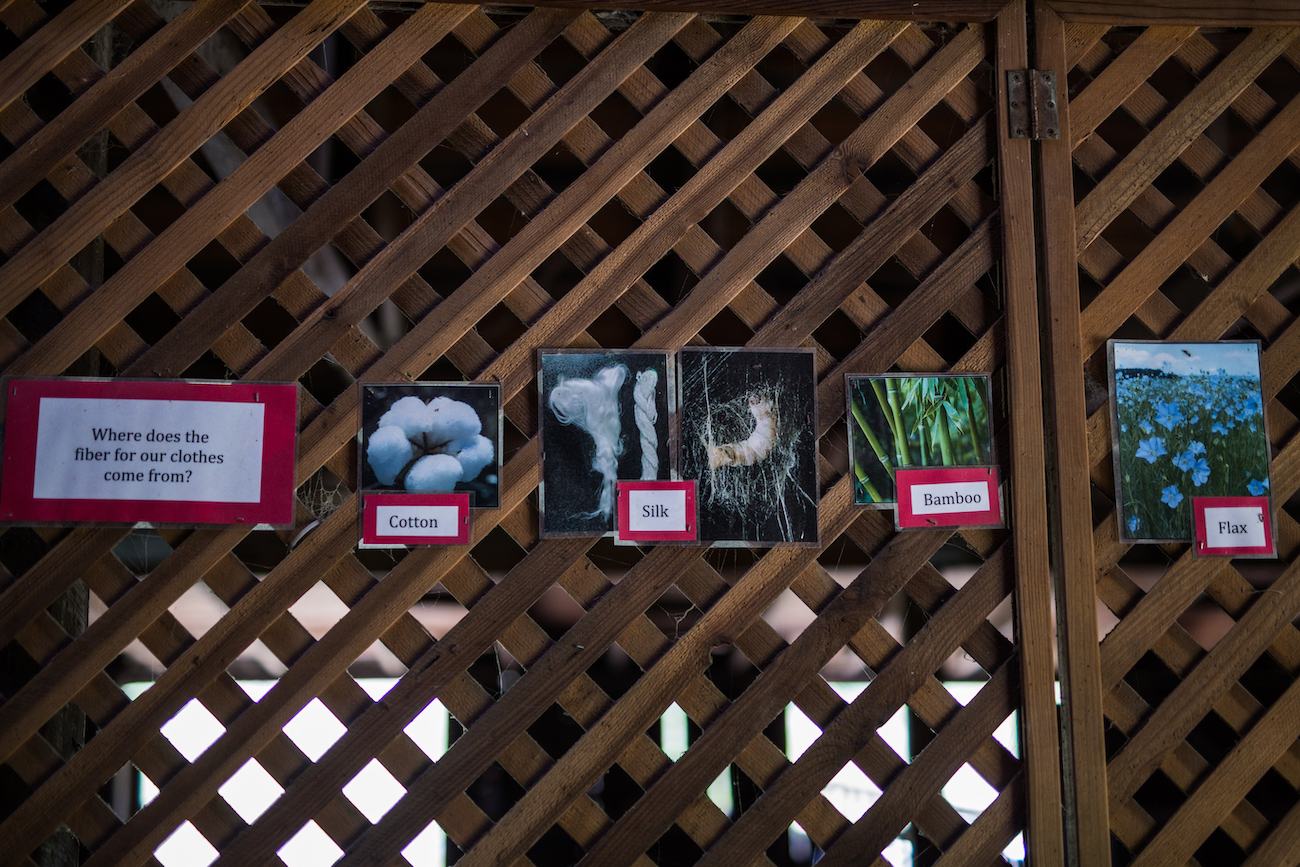
“Why do we have ranches? What is their role? How is agricultural heritage and culture important? These are the types of questions we are able to address at events like this. We are able to show how fundamental ranches and organizations like Fibershed are in preserving regional systems and the environment. Why the work they do is necessary and important,” shares Gunn thoughtfully.
Because as society grows away from nature, as children spend more time indoors and the inside of a boardroom calls more fervently than open pastures, it is critical to be reminded where our true roots lie. And sometimes it’s something as simple as a shawl that can put it all into perspective.
Before the event ends, there are still seedlings to plant and take home, and small bits of wool to dye an assortment of colors. There’s a children’s garden to explore and worms to find. But even after the day is done, there are plenty of opportunities for the fun to continue.

In addition to year-round school programs, Elkus Ranch also runs seasonal camps where children can see chicks hatch and participate in the care of poultry one week, and then learn all about goats the next, along with cooking, crafts, and outdoor scientific exploration. It’s applied learning, which allows youngsters to practice and reinforce all the new skills they learn while creating a deeper understanding of the knowledge they’ve acquired.
“The kids get to do things like catch and hold a chicken. You can’t get more hands-on learning than that,” laughs Gunn.
To honor the wish of Mr. and Mrs. Elkus, the ranch tries to keep fees as affordable as possible for the 6,500 children and 1,500 adults it serves each year. A three-hour field trip is $9 per child, while a full day of summer or winter camp is $70. However, continuing their critical work and services isn’t without challenge. While the original donation included more than 600 acres, Elkus Ranch has needed to make difficult decisions to be able to expand and meet the needs of its growing community.
Sixty acres were sold in the early 1990s to pay for a conference and event center, while 450 acres were sold in 2009 to Mid-Peninsula Regional Open Space District in Los Altos for their skyline-to-sea trail. Because of the latter, a facilities endowment has helped secure the future of Elkus Ranch. Educational programs receive additional support each year from a donor-advised fund of the Silicon Valley Community Foundation. Today about 62% of the ranch’s budget is supported by the University of California, and the rest achieved through program fees and support from grants and fundraising.
The 126 acres of Elkus Ranch today is used partially for the animals and gardens, leaving a large open space for possible expansion of outdoor education facilities and to test out new ideas. Conservation practices, including implementing a carbon farm plan created for Elkus by the San Mateo Resource Conservation District, are next. The plan includes a new manure bunker to help the ranch manage its manure and produce compost more effectively, plans for prescribed grazing, erosion remediation, hedgerows, and solar installation.

“The issues on a farm can compound quickly, and for us, mountain lion predation in the last years led to higher impact in and around the barn area. Since our animals can no longer be left out at night, a staff member has to let them out in the morning and bring them back in later. This has led to erosion in the areas they are allowed, higher feed and cleaning costs as they are confined to enclosures for longer periods of time, and an unwieldy amount of manure, among other challenges,” details Gunn. “One thing just leads to the next.”
She pauses and takes a breath. All around her, families are joyfully going from one activity to the next. The animals are content in their stalls and pastures. There are towering coastal redwoods, fragrant alpines and swaying coyote brush on the surrounding hillsides. If it was a quieter day, the trickling sounds of a nearby Purisima Creek tributary might also be heard among the soft clucking of hens and braying of sheep.
“But it’s worth it.”
A little boy in overalls and a light blue shirt runs by. “I love Elkus Ranch!” he declares to no one in particular. “I just love it!”
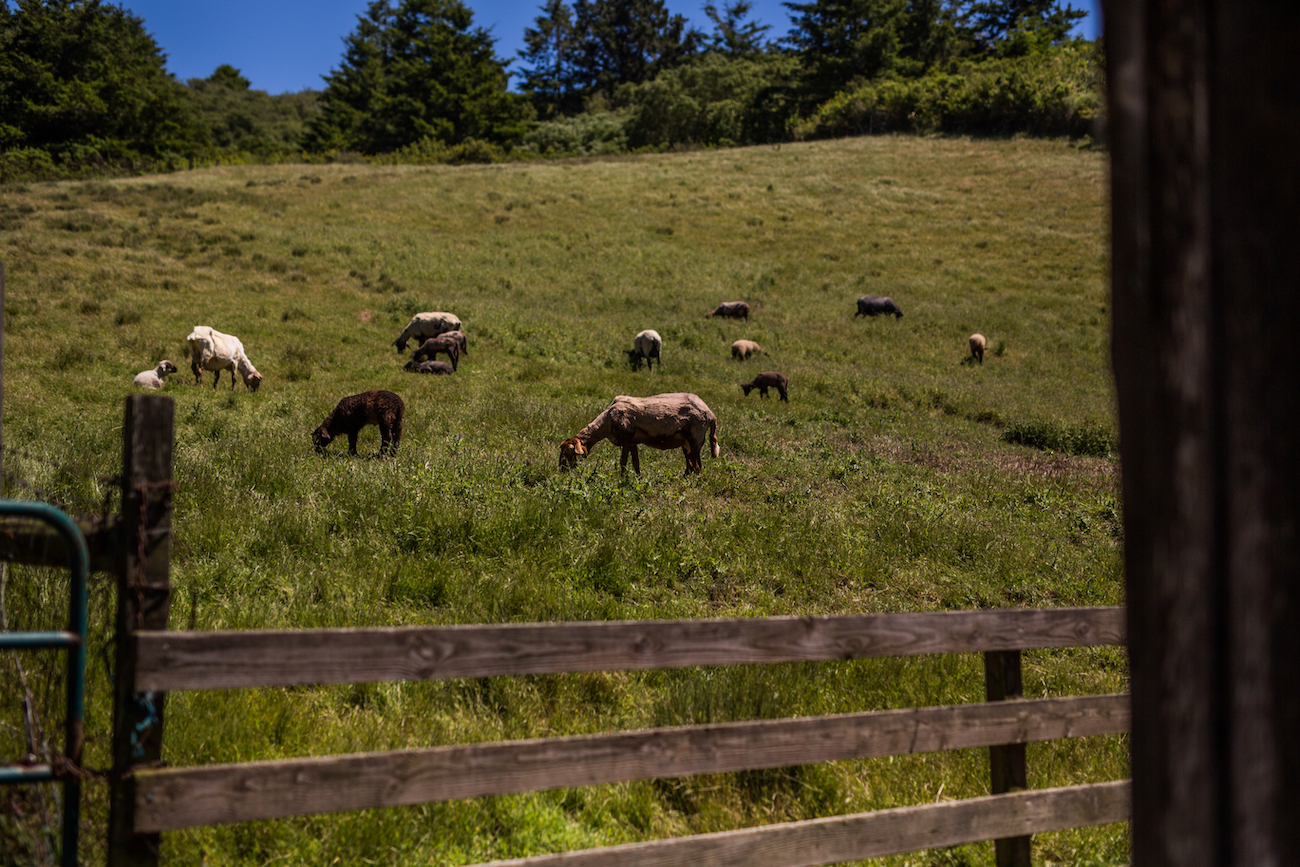
There can be no better testimonial that UC Elkus Ranch has indeed realized its vision than that.
On Saturday, September 21, Elkus Ranch will be hosting “Celebrating our Coastal Fibershed: A Day of Regenerative Agriculture Education” with presentations and hands-on opportunities by Fibershed staff and producer members. The event will be dedicated to celebrating, learning about, and supporting regenerative agriculture—including food, fiber, and farms—and building a coastal fibershed community while raising funds to support the continuation of Elkus Ranch’s educational programming. For more information, visit www.ucanr.edu/fiber.
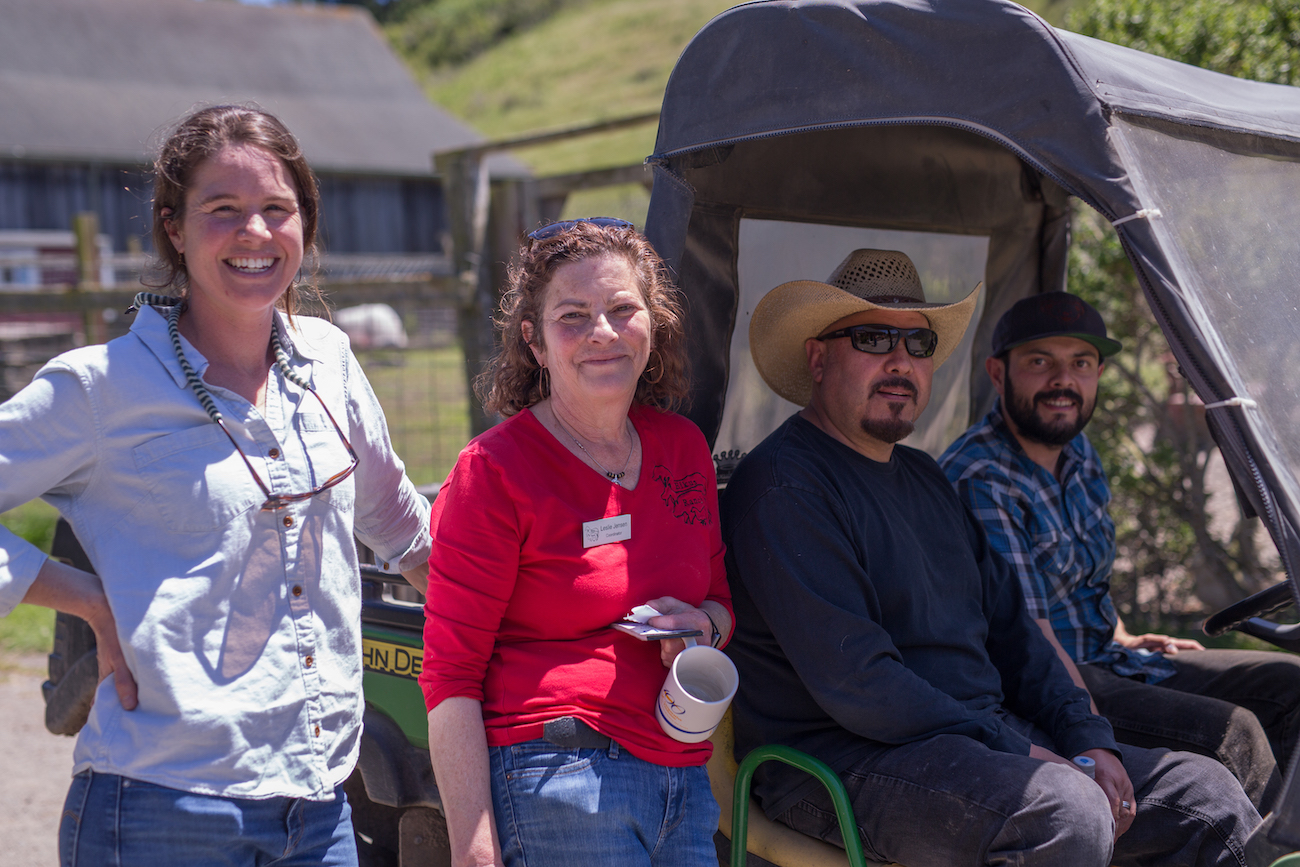
Learn more about UC Elkus Ranch by visiting their website here.





